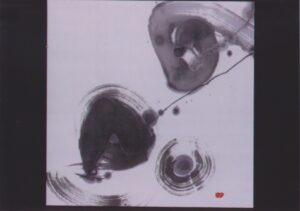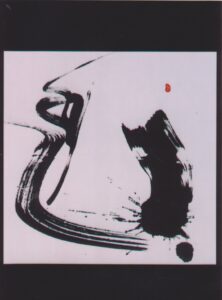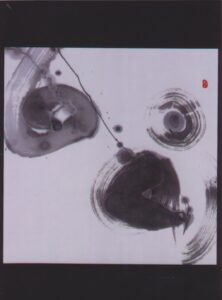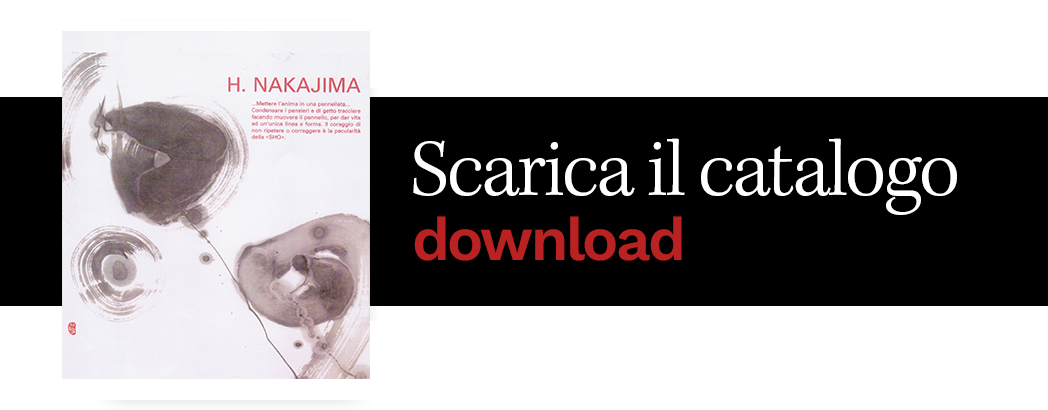
With the entry into the 20th century, painters’ gazes, which until then had been turned outwards, also turned inwards, there was the birth of abstract painting.
Many times, ‘Sho’ is interpreted as a type of abstract painting by Westerners and people from outside the ideogram culture. From the perspective of expressing one’s inner self and not landscapes or objects, it can be said that ‘Sho’ is also, in the world of the abstract, an art that pursues beauty. Sho’, however, possesses a special characteristic that does not exist in abstract painting. Firstly, the fact that it makes ‘characters’ its subject. While alphabetical signs, one by one, are phonetic symbols, most ‘ideograms’, the original Oriental characters, consist of shapes taken from things, and each character includes both a meaning and a sound.
For example, the character ‘Tree’ is made by imitating the shape of an upright tree, and ‘Moon’ from the shape of the waning moon floating in the evening sky. The ‘Sho’ character is, yes, made up of several lines, but these are not mere random lines, they are lines that form the character.
Calligraphy artist Inoue Yuichi says: ‘Although some say that calligraphy is an expression of lines, it is during the process of writing characters, in the realisation of the lines that the complex and delicate secret of calligraphy lies’. The calligraphic artist is influenced by the contact with the form and meaning of the ‘ideograms’, picks up the brush and, through the writing of the characters, projects his own interiority onto the sheet of paper.
Putting the soul into a brushstroke.





